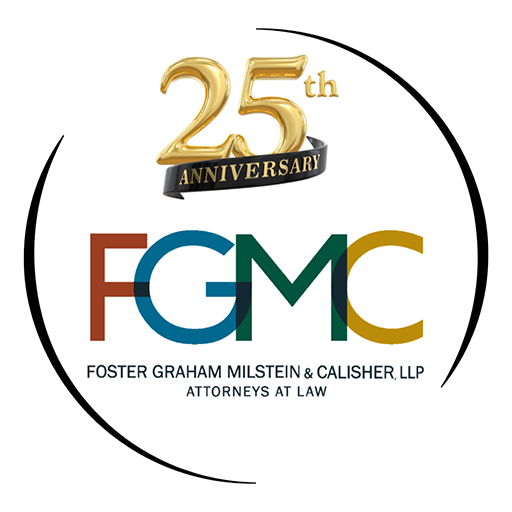On July 4, 2025 Donald Trump signed into law the “One Big Beautiful Bill Act” (“OBBBA”). The bill is huge and addresses many tax and spending matters. We’ve selected those tax provisions of the OBBBA that we believe are of relevance to most of our clients and friends, and provided a very brief analysis of some of those changes to the tax laws for you. We’ve intentionally left out several tax laws that have been eliminated by the OBBBA, such as clean energy credits, because they are unlikely to provide taxpayers with savings opportunities going forward. Our analysis is not comprehensive. If you have specific questions about any of the below analysis feel free to contact us.
Changes Affecting Individual Taxpayers
Estate and Gift Tax Exemption (Unified Credit)
| Old Law | New Law | Effective Date |
| Taxpayers are entitled to an exemption from estate and gift taxes equal to $13.99 million in 2025 (the exemption can be used against lifetime gifts, and any unused amount against the taxpayer’s estate, hence the term “unified credit” because it can be used for both taxes). The exemption was scheduled to expire after 2025 and return to pre-2017 levels (roughly cut in half). | The exemption, already annually indexed for inflation, will increase to $15 million and will continue to be indexed for inflation in future years. | Applies to decedents dying and gifts made after December 31, 2025. |
| Comment: This is a modest increase to the unified credit, but more importantly, it provides some certainty that a reduction in the amount of unified credit will not occur. | ||
Child & Dependent Care Credit
| Old Law | New Law | Effective Date |
| A taxpayer with at least one qualifying person may claim a nonrefundable credit for a portion of dependent care expenses. Qualifying persons are generally children under the age of 13, disabled dependents, or disabled spouses. The credit is up to 35% of expenses, limited to $3,000 for one qualifying person, or $6,000 for two or more qualifying persons. The credit is reduced at certain income levels. | The credit percentage is increased to 50%. The rates and income levels at which the credit is reduced has been modified. | Tax years beginning after December 31, 2025. |
Child Credit
| Old Law | New Law | Effective Date |
| Individuals are granted a tax credit for each child claimed as a dependent on a tax return, and a credit for other dependents claimed in tax years before 2026. The credits are $2,000 ($1,000 for tax years after 2025) and $500 respectively, and each credit phased out at certain income levels. | The credit has been increased to $2,200 for each child dependent. | Tax years beginning after December 31, 2024. |
Adoption Credit
| Old Law | New Law | Effective Date |
| Individuals could claim a credit for adoption expenses. The maximum credit was $16,810 in 2024, and began to phaseout when modified adjusted gross income exceeds $252,150. The credit was nonrefundable (no refund if the tax owed is less than the amount of the credit). | Up to $5,000 of the credit is now refundable (the amount is adjusted for inflation). | Tax years beginning after December 31, 2024. |
Employer Provided Childcare Credit
| Old Law | New Law | Effective Date |
| An employer could claim a tax credit for expenses paid in providing childcare services for employees. The credit was 25% of qualifying expenses, plus 10% of qualified resource and referral expenses, up to $150,000 annually. | The credit is increased to 40% of expenditures (50% for eligible small businesses) and the maximum credit is $500,000 ($600,000 for small businesses) indexed annually for inflation. | Applies to amounts paid or incurred after December 31, 2025. |
Paid Family Medical Leave Credit
| Old Law | New Law | Effective Date |
| For years beginning before Jan. 1, 2026 eligible employers could claim a credit to a percentage of wages paid to qualifying employees for leave under the Family Medical Leave Act. The credit starts at 12.5% of wages paid (if at least 50% of normal wages) during leave and increases in increments of .25% if more than 50% of normal wages are paid during leave. | The credit, at the employer’s election, is (i) a percentage of wages paid during leave, or (ii) a percentage of premiums paid for insurance to provide paid family medical leave. The credit is made permanent. | Tax years beginning after December 31, 2025. |
529 Plans/Qualified Tuition Programs
| Old Law | New Law | Effective Date |
| 529 plans are tax-favored plans allowing persons to prepay tuition or contribute to an account for qualifying education expenses. Qualifying expenses include costs associated with post-high school education (e.g., college or university), and up to $10,000 of elementary or secondary education expenses, up to $10,000 of principal or interest student loan payments, and expenses associated with apprenticeship programs. | Qualifying higher education expense includes certain expenses in connection with enrollment or attendance at elementary or secondary public, private, or religious school. The per-beneficiary limitation of distributions for elementary or secondary education expenses is increased to $20,000. | Qualifying expenses: applies to distributions made after July 4, 2025.
Increased limitation on distributions: Tax years beginning after December 31, 2025. |
Individual Income Tax Rates
| Old Law | New Law | Effective Date |
| Income tax rates vary on the basis of filing status (e.g., single, married filing jointly, etc.) and income levels. The Tax Cuts and Jobs Act modified tax rates and income levels (e.g., reducing the top 39.6% rate to 37%). | Permanently extended the rates and income thresholds, which were scheduled to expire after 2025, and adjusts some of the lower brackets for inflation. | Tax years beginning after December 31, 2025. |
Home Mortgage Interest Deduction
| Old Law | New Law | Effective Date |
| Interest paid on a home mortgage could be claimed as an itemized deduction. The deduction was limited to debt that did not exceed $750,000 ($375,000 if married filing separately) if that debt was secured between December 15, 2017 and January 1, 2026. | Permanently disallows any mortgage interest deduction for home equity indebtedness, and generally only permits deductions for acquisition indebtedness up to $750,000 ($375,000 if married filing separately). Treats mortgage insurance premiums on acquisition indebtedness as deductible interest. | Tax years after December 31, 2025. |
Alternative Minimum Tax Exemption and Phaseout
| Old Law | New Law | Effective Date |
| Individuals, estates, and trusts may be subject to the alternative minimum tax (AMT) in addition to regular income tax. A certain amount of alternative minimum taxable income is exempt from AMT. The amount of exemption was scheduled to sunset (return to prior law) and reduce after 2025. The exemption was phased out at a rate of 25% for each dollar of alternative minimum taxable income over threshold amounts. | The increased exemption amount is made permanent, and the phaseout rate was raised to 50%. | Tax years beginning after December 31, 2025. |
Standard Deduction
| Old Law | New Law | Effective Date |
| Individual taxpayers, in computing taxable income may claim either a standard deduction or itemize deductions. The standard deduction, though adjusted for inflation annually, was scheduled to reduce to lower amounts under prior law. | The increased standard deduction amount is permanently extended and increases the standard deduction to $15,750 for individuals and $31,500 for joint filers. | Tax years beginning after December 31, 2024. |
Deduction for State and Local Taxes
| Old Law | New Law | Effective Date |
| For taxpayers that elect to itemize deductions, a deduction for certain state and local taxes paid, is allowed. The deduction was capped at $10,000 for individuals and joint filers. | For 2025 the deduction is now capped at $40,000 for individuals and joint filers, but is reduced (but not below $10,000) when modified adjusted gross income exceeds $500,000. Beginning in 2026, the deduction and reduction threshold is even higher. | Tax years beginning after December 31, 2024, but the limitation reverts to $10,000 for tax years after December 31, 2029. |
Deduction for Seniors
| Old Law | New Law | Effective Date |
| Taxpayers age 65 and over were entitled to an additional standard deduction amount ($1,550 for each joint filer in 2024, or $1,950 for a single filer). | For tax years 2025 through 2028 the deduction amount is $6,000 reduced by 6% of adjusted gross income exceeding $150,000 for joint filers ($75,000 for single filers) | Tax years beginning after December 31, 2024. |
Auto Loan Interest Deduction
| Old Law | New Law | Effective Date |
| None. Interest on auto loans was not deductible by individual taxpayers. | Interest on auto loans is deductible, but limited to $10,000, phased out by $200 for every $1,000 of modified AGI in excess of $200,000 for joint filers ($100,000 for single filers). Campers and RVs are not eligible. The deduction is available to non-itemizers. | Applies to indebtedness incurred after December 31, 2024, and tax years beginning after December 31, 2024, but before January 1, 2029. |
| Comment: The deduction does not apply for among other things, commercial vehicles not used for personal use, leased vehicles, and the purchase of used vehicles, and the vehicle must be assembled in the U.S. If this deduction is important to you, you may want to make sure financing does not extend beyond 2028 because interest paid thereafter is not going to be deductible without this law being extended. | ||
Charitable Contribution Deduction
| Old Law | New Law | Effective Date |
| Taxpayers itemizing deductions can claim a deduction for gifts of cash or property to qualified charitable organizations. The deduction was limited to a percentage depending on the type of organization receiving a gift, and any excess could be carried forward five years. Non-itemizers could deduct up to $600 for joint filers ($300 for single filers). | Deductions can be claimed only to the extent they exceed .5% of a taxpayer’s contribution base (generally, adjusted gross income without regard to net operating loss carrybacks and charitable contributions). Permanently provides non-itemizers with a deduction up to $2,000 for joint filers ($1,000 for single filers). | Tax years beginning after December 31, 2025. |
Deduction for Tip Income
| Old Law | New Law | Effective Date |
| Tip income was included in gross income. No deduction existed. | Creates a deduction for tips up to $25,000. The deduction phases out for joint filers with modified adjusted gross incomes over $300,000 ($150,000 for single filers). Qualifying tips are limited to business in which tips are customarily paid. | Tax years beginning after December 31, 2024, but before January 1, 2029. |
| Comment: The IRS has 90 days to publish a list of businesses in which tips are customarily paid. | ||
Deduction for Overtime Pay
| Old Law | New Law | Effective Date |
| Overtime pay was included in gross income. No deduction existed. | Creates a deduction for qualified overtime pay for itemizers and non-itemizers. Excludes highly compensated employees. The deduction is limited to $25,000 for joint filers ($12,500 for single filers) and phases out for joint filers with adjusted gross income over $300,000 ($150,000 for single filers). | Tax years beginning after December 31, 2024, but before January 1, 2029. |
Personal Exemption
| Old Law | New Law | Effective Date |
| For tax years beginning after 2025, individuals could claim a personal exemption deduction. | The deduction for personal exemptions is terminated. | Tax years beginning after December 31, 2024. |
Trump Accounts
| Old Law | New Law | Effective Date |
| None. | Creates a new form of individual retirement type account for qualifying children under 8 years old. Funds can be used for qualified expenses. Annual contributions are capped at $5,000 (indexed for inflation). US citizens born after 2024 and before 2029 receive an initial government contribution of $1,000. An exclusion from employee gross income exists for employer contributions, and an exclusion from the beneficiary’s gross income for qualifying contributions. Funds become available when the child reaches the age of 18. | Tax years beginning after December 31, 2024. |
| Comment: If someone is considering a contribution to a Trump account or 529 plan, in most cases the 529 plan might be most beneficial because qualifying distributions are not taxable, whereas it appears that distributions from Trump accounts will be taxable. However, qualifying distributions from 529 plans are limited to qualifying educational expenses, whereas there do not appear to be limitations on what funds from Trump accounts can be used for. | ||
Changes Affecting Businesses
Corporate Charitable Contributions
| Old Law | New Law | Effective Date |
| For most corporate taxpayers a deduction for charitable contributions was limited to 10% of taxable income. | The bill adds a floor (in other words, deductions must exceed this amount to be deductible). The floor is equal to 1% of taxable income. Contributions about the 10% limit may be carried forward up to 5 years. | Tax years beginning after December 31, 2025. |
Asset Expensing
| Old Law | New Law | Effective Date |
| Section 179 allows a taxpayer to expense and deduct (rather than capitalize and depreciate) qualifying property. The maximum amount expensed was limited to $1 million, and this limitation was reduced to the extent the cost of qualifying property exceeded $2.5 million | The maximum amount that may be expensed is increased to $2.5 million, but is reduced to the extent the cost of qualifying property exceeds $4 million. | Effective for qualifying property placed into service in tax years beginning after December 31, 2024. |
Partnership Disguised Sale Rules
| Old Law | New Law | Effective Date |
| Generally, contributions to and distributions from a partnership are non-taxable events. Combining these rules can lead a taxpayer to achieve the economic equivalent of a sale without triggering tax consequences. Treasury regulations were in place to curb abuses, know as “disguised sales.” | Rather than rely on treasury regulations, the disguised sale rules are now applicable under the Internal Revenue Code. | Applies to services performed and property transferred after the date of enactment of the OBBBA. |
| Comment: The inclusion of this provision seems to eliminate any argument that the disguised sale rules only apply to the extent covered in final regulations. | ||
Partial Exclusion For Gain from Small Business Stock Sale
| Old Law | New Law | Effective Date |
| IRC § 1202 provides that for shareholders other than corporations, all or a portion of any gain from the sale of qualified small business stock held for more than 5 years is not included in gross (taxable) income. The excludable amount is limited on a per-issuer basis. Qualifying stock includes a limitation on the amount of the issuer corporation’s gross assets. | The excludable gain is limited to 50% for qualified small business stock held at least 3 years, 75% for stock held at least 4 years, and 100% for stock held at least 5 years. Also, the per-issuer limitation is increased to $15 million, with an annual inflation adjustment. The gross asset limitation is increased to $75 million. | Stock must be acquired after the date of enactment to qualify under the new rules. |
Deduction for Business Interest
| Old Law | New Law | Effective Date |
| The deduction for business interest was limited to business interest income, 30% of adjusted taxable income, and floor plan financing interest. Adjusted taxable income computed without regard to depreciation, amortization, and depletion. | Makes permanent the modified adjusted taxable income calculation for purposes of the limitation on the deduction of business interest. | Tax years beginning after December 31, 2024. |
Deduction for Business Interest (cont.)
| Old Law | New Law | Effective Date |
| The calculation of adjusted taxable income for purposes of the deduction also disregards certain items like net operating loss deductions, qualified business income deductions, etc. | The calculation of adjusted taxable income for purposes of the deduction now disregards some types of foreign income (subpart F, GILTI) and associated gross ups under IRC § 78, and a portion of deductions allowed on account of foreign sourced dividends and gross ups. | Tax years beginning after December 31, 2025. |
Depreciation for Qualified Production Property
| Old Law | New Law | Effective Date |
| A bonus depreciation deduction was allowed for certain property placed in service before January 1, 2027. Unlike §179 property (see above) there are no limitations on claiming bonus depreciation. However, the rate of the amount of bonus depreciation that might be claimed declined between 2017 and 2026. | The 100% rate of bonus depreciation is made permanent, and allows taxpayers to elect a 40% rate for property placed in service during the first tax year ending after January 19, 2025.. | The first taxable year ending after January 19, 2025. |
Qualified Business Income Deduction
| Old Law | New Law | Effective Date |
| For tax years 2018 through 2025 non-corporate taxpayers with pass-through business income were allowed a deduction from ordinary income equal to the lesser of (i) 20% of qualified business income from a qualified business, plus 20% of qualified real estate investment trust dividends and qualified publicly traded partnership income, or (ii) 20% of taxable income minus net capital gain. Qualified business income earned was subject to phase in limitations, depending on W-2 income paid by the qualified trade or business, and whether qualified income was earned in a specific service trade or business. | The 20% deduction for qualified business income is permanently extended. Also, phase-in limitations are increased, and adds a minimum deduction of $400 for taxpayers with at least $1,000 of qualified income (indexed for inflation). | Tax years beginning after December 31, 2025. |



